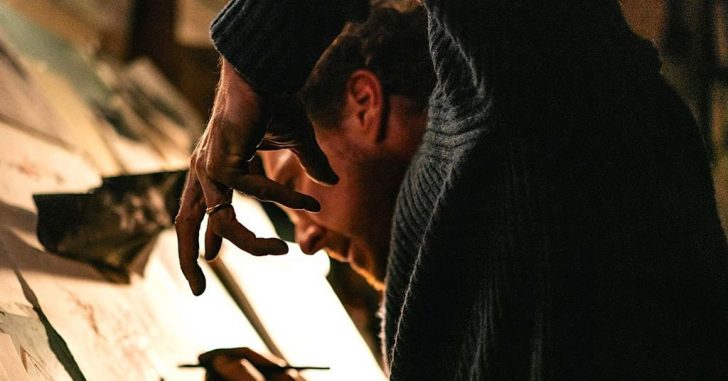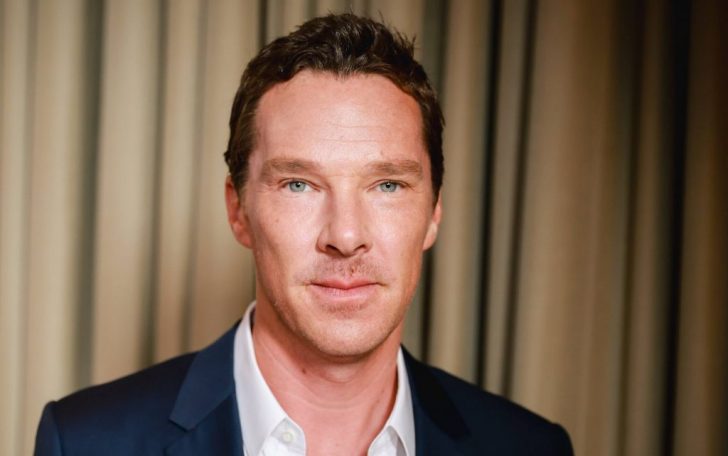An Overview of the 2025 British Drama “The Thing With Feathers”
When “The Thing with Feathers” hit screens on January 25, 2025, audiences were intrigued. A British drama starring Benedict Cumberbatch, the film is an adaptation of Max Porter’s acclaimed novella, “Grief Is the Thing with Feathers.”
Directed and written by Dylan Southern, the movie translates Porter’s literary experiment into a haunting cinematic journey. But how does it handle its dense and deeply emotional source material?
The story begins with Cumberbatch’s unnamed Dad solemnly addressing his sons after their mother’s funeral. “Proud” is the word he uses, but the grief in his voice betrays him. His life, and that of his sons, has been shattered, and the film doesn’t shy away from the bleakness of their situation.

Vulture / Benedict Cumberbatch delivers a powerhouse performance, embodying the fragile strength of a grieving father.
From the first scene, “The Thing with Feathers” sets its tone with raw, emotional weight. However, the title “The Thing with Feathers” is a direct nod to the metaphorical presence of Crow, a literal manifestation of sorrow that dominates the story. However, this is not just a bird. It is a physical embodiment of grief, invasive and unrelenting. Played by Eric Lampaert and voiced with biting sarcasm by David Thewlis, Crow is menacing, grotesque, and strangely hypnotic. This character is where the film’s strengths and weaknesses collide.
The Movie Adapts “Grief Is the Thing With Feathers”
Porter’s novella is a whirlwind of prose, poetry, and essays, making it a daunting task to adapt. The book’s fragmented style mirrors the chaos of grief, something Southern tried to capture in the film. Divided into four chapters – Dad, Boys, Crow, and Demon – the narrative unfolds through shifting perspectives. It is a bold choice, but does it work?
On paper, Porter’s Crow is a mysterious force of nature, ambiguous and poetic. On screen, the character’s horror elements are amplified. Jump scares and towering visuals make Crow physically imposing, but his presence becomes more monotonous than metaphorical.
Southern’s background in music videos is evident in the stylized chaos. Yet, the delicate balance of grief and absurdity that Porter masterfully achieves feels heavy-handed here.
Cumberbatch’s Dad Is a Portrait of Pain
Benedict Cumberbatch delivers a powerhouse performance, embodying the fragile strength of a grieving father. His character – a graphic novelist instead of the academic from the book – throws himself into work as a coping mechanism.
He obsessively sketches crows, pouring his sorrow into art. But it is clear that this is no cure – the house is in disarray, and so is his mind.
Cumberbatch portrays Dad’s descent with haunting authenticity. He oscillates between forced normalcy – making breakfast, taking his sons to school – and moments of complete emotional collapse. His struggle is not just with Crow but with his own overwhelming grief. It is a performance that grounds the film, even when the narrative falters.

People / While Crow’s presence in the book is more nuanced, the film – led by Benedict Cumberbatch – leans into horror tropes.
Crow as Metaphor and Menace
The crow in “The Thing with Feathers” is no ordinary bird. Voiced with a thick accent and foul mouth, he’s like a Dickensian villain come to life – part tormentor, part guide. His role is to shepherd the family through their grief, but his methods are anything but gentle.
His looming figure, sharp talons, and mocking tone create a jarring contrast to the family’s tender moments of vulnerability. This interpretation may leave some viewers feeling pummeled rather than moved as the subtlety of grief morphs into something overtly menacing.
Despair to Hope Is the Film’s Arc
The narrative arc of “The Thing with Feathers” mirrors the stages of grief. The Dad’s journey takes him from numbness to utter despair, culminating in a climactic showdown with Crow. It is a raw and visceral depiction of hitting rock bottom. But the film doesn’t end there. The final moments hint at the possibility of healing as Dad and his sons begin to find their way back to each other.
However, the road to that resolution feels uneven. Southern’s decision to break the story into chapters creates a fragmented viewing experience. While this mirrors the chaos of the characters’ emotions, it also disrupts the flow. The film’s emotional beats sometimes feel rushed, leaving viewers yearning for more depth in its quieter moments.